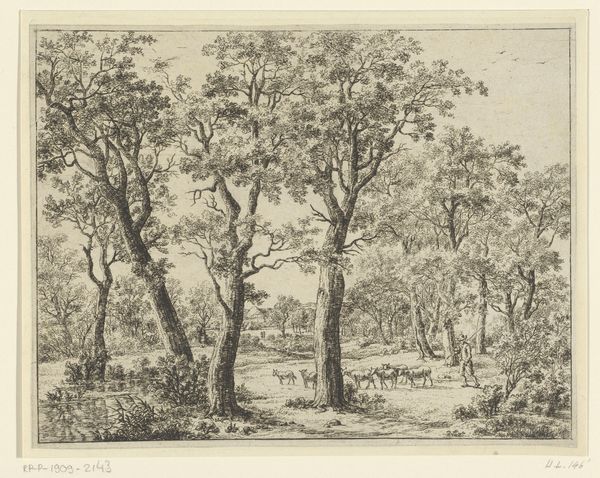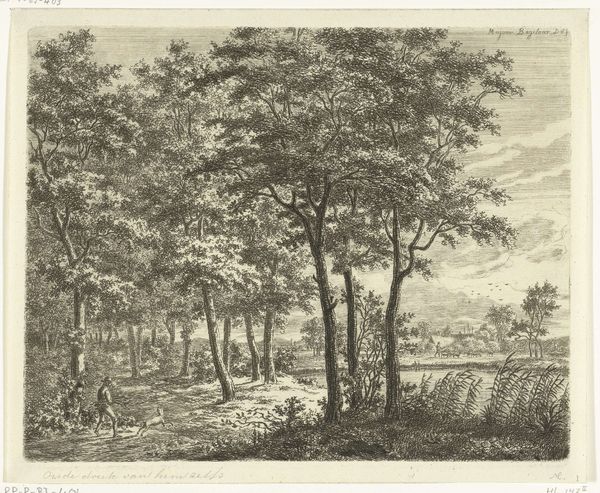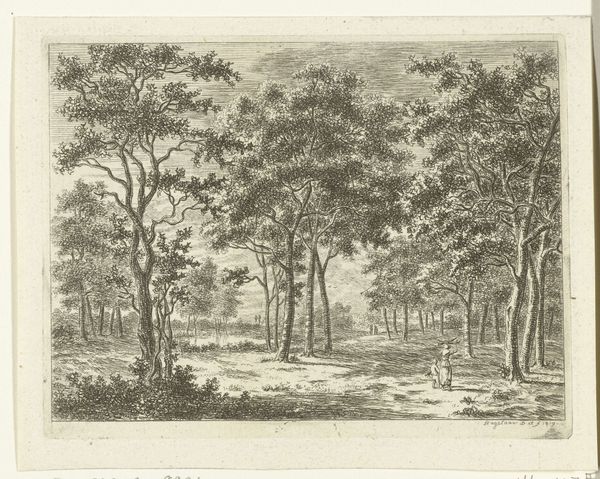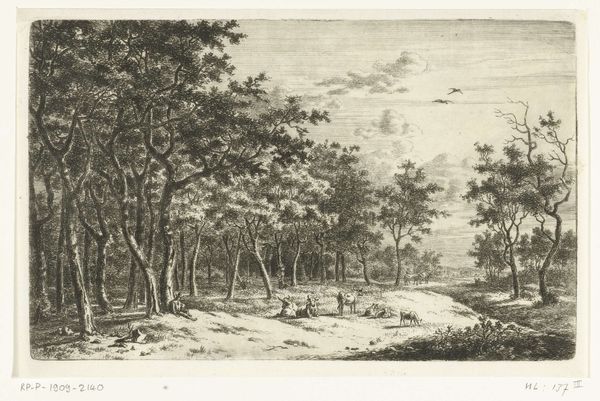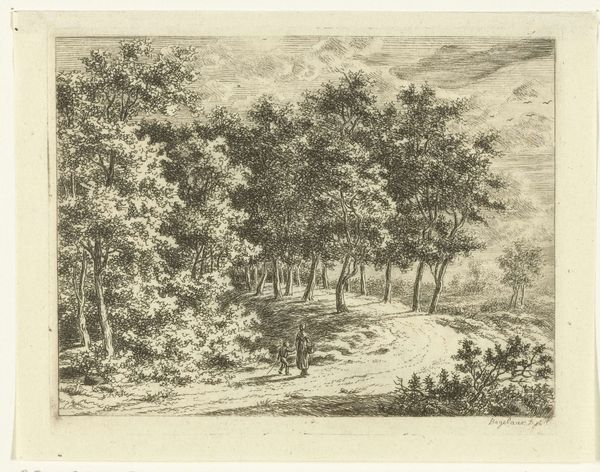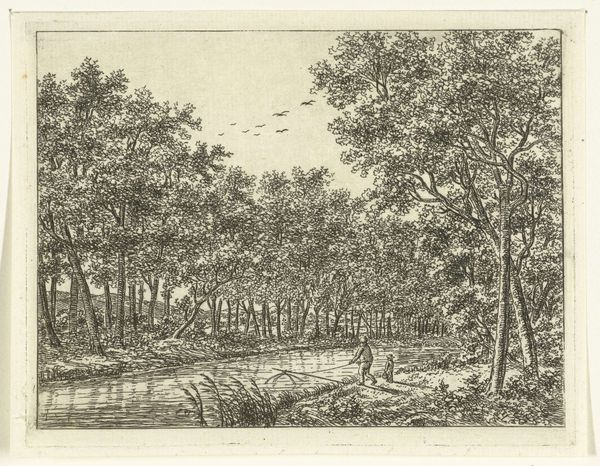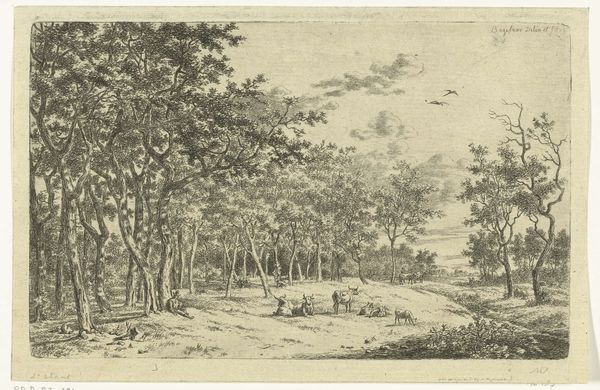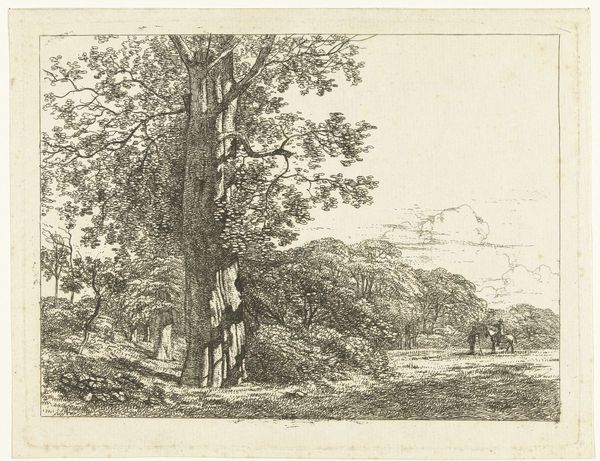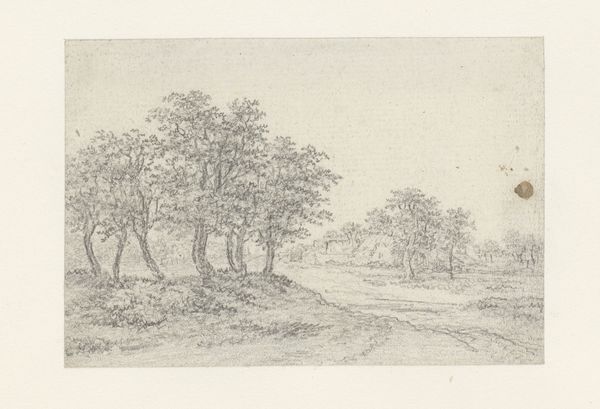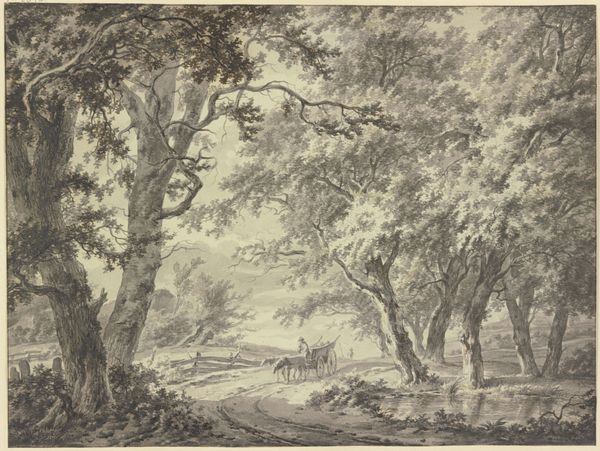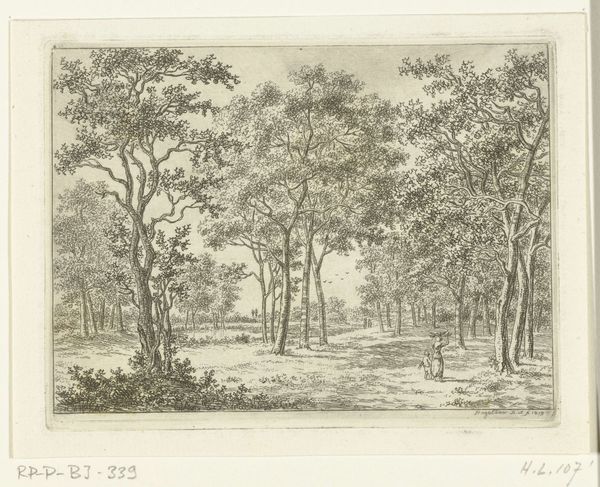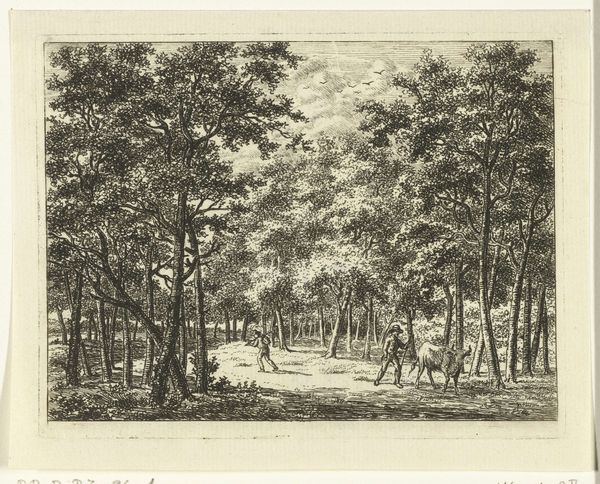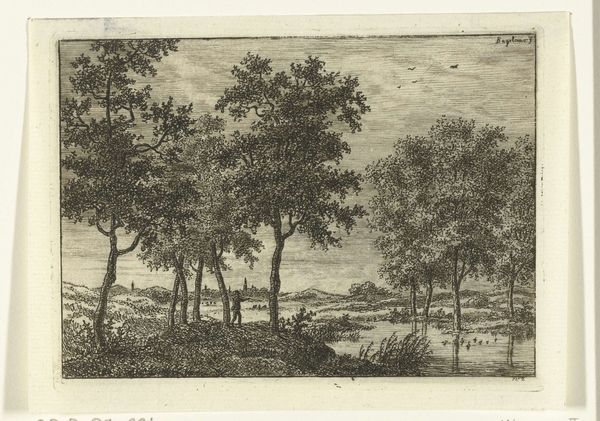
etching
#
etching
#
landscape
#
etching
#
figuration
#
romanticism
Dimensions: height 93 mm, width 121 mm
Copyright: Rijks Museum: Open Domain
Editor: We’re looking at "Wandelend stel in het bos" – that’s “Couple Walking in the Woods” – an etching made sometime between 1798 and 1837 by Ernst Willem Jan Bagelaar. It’s all delicate lines and contrasting textures, creating this very serene, almost contemplative atmosphere. What catches your eye in this landscape? Curator: What I see is an embodiment of Romantic ideals filtering into Dutch art of this period. These quiet figures strolling in the forest weren't just enjoying a leisurely walk; it was a way for people to interact with a grand, untamed space of nature, offering an antidote to the increasing urbanisation and industrial progress. Why do you think Bagelaar chose this viewpoint rather than one showing figures as they tower through the landscape? Editor: Perhaps he wanted to focus on their shared human experience, framing them in a way that isn’t overtly dramatic or overpowering? To really drive that concept, why are they depicted as merely secondary elements dwarfed by this all-encompassing arboreal vista? Curator: Exactly. Landscape prints such as this fed a market increasingly attuned to concepts of sublime nature and individual experience, shaped by authors such as Rosseau. And that it is printed and widely disseminated underscores a burgeoning sense of public access to and ownership of this experience. Who controlled and viewed landscape art prior to its evolution towards etching and more reproducible formats? Editor: That's fascinating, I hadn’t considered the public access aspect. So, an etching like this made nature and, to some degree, its emotional or spiritual benefits more accessible. That's more than just aesthetics; it's about social impact. Curator: Precisely. Understanding this connects artistic intention with cultural context, allowing us to understand better both the image itself and its intended impact.
Comments
No comments
Be the first to comment and join the conversation on the ultimate creative platform.
